
Rebecca Nesvet, “Miss Whitehead, ‘The Bank Nun’”
An urban legend maintains that early in the nineteenth century, one Miss Whitehead, colloquially known as “the Bank Nun,” frequently visited the Bank of England to accuse that institution of destroying her brother, a financial forger. This essay traces the evolution of this legend. I contend that in 1837, an obscure comic sketch reacted to that year’s major financial crisis by dredging up the Romantic-era case of financial forger Paul Whitehead and focusing on his surviving sister. Displacing her brother’s notoriety onto her, the sketch reinvents her as “the Bank Nun,” a grotesque magnet for lingering Romantic-era anxieties about the circulation of paper credit, financial forgery, and women. A succession of plagiarisms, retellings, and reappraisals of this ephemeral sketch and its portrait illustration made the Bank Nun a folk heroine of enduring resonance. Via this iconic figure, Romantic-era economic controversy haunts London today.

Sasha Dovzhyk, “The Queer Little Grove: The Adoption of Aubrey Beardsley by Mikhail Kuzmin”
This article explores one of the many aspects of Aubrey Beardsley’s (1872–1898) transnational legacy, focusing on his appropriation by Mikhail Kuzmin (1872–1936), a key modernist writer and a seminal voice of the emerging homosexual subculture in Russia. While Kuzmin often used Beardsley as a signifier of homoeroticism in his literary works and life-writing, it is in his play Little Grove (1922) that the queering of Beardsley is crystallized. My intermedial analysis of the piece will show how allusions to Beardsley shape Kuzmin’s representation of gender and sexuality and how the formal construction of Kuzmin’s publication echoes the formal features of Beardsley’s graphic designs.

James Najarian, “Alexander Burnes’s Travels into Bokhara (1834)”
Alexander Burnes’s Travels into Bokhara (1834) is a foundational text of the British fascination with Central Asia, both in a geopolitical sense—the “Great Game” of the rivalry between Britain and Russia in Asia—and in a literary one. It is the most prominent of many travelogues of Afghanistan and Central Asia that relate experiences from the late 1820s to late 1830s, preceding the First Anglo-Afghan War (1839-42). Burnes’s Travels sold well and were immediately translated into French. For a time “Bokhara Burnes” was a literary celebrity. Yet the sensation of his Travels led him to another, less successful appointment in Kabul and finally to his third and final appointment there, as British envoy during the war. Not only was Burnes Britain’s leading Afghan expert; he also became the Afghans’ leading target. His murder sparked the course of the British rout. With a turn to his Persian secretary Mohan Lal Kashmiri’s account of the same travels in his Travels in the Panjab, this paper examines Burnes, his career, and his Travels in order to understand the events and his text’s role in them.
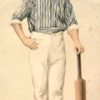
Joanne Wilkes, “The Implications of the Cricket Match in Anthony Trollope’s The Fixed Period (1882)”
Anthony Trollope’s late novel The Fixed Period (1882), set a century in the future in a fictional South Pacific island, has often puzzled readers. It deals with a policy of compulsory euthanasia in the politically independent island of Britannula, a policy that is overturned when the island is taken over by Britain. My article aims to explain an odd interlude in the novel: a cricket match in Britannula between a local and an English team. Drawing on the history of cricket matches between England and its antipodean colonies around the time of the novel’s composition, I argue that the cricketing interlude serves to highlight the text’s take on the Britannulans. This community, living a hundred years in the future, claims to be autonomous, but it possesses a mindset still governed by a sense of Britain as the “mother country.” Hence Trollope emphasizes how difficult it is for settler societies to shake off such attitudes and ties.
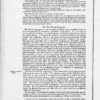
Matthew Jones, “On Nineteenth-Century Welsh Literacies, and the ‘Blue Book’ Education Reports of 1847”
This essay considers the 1847 Reports of the Commissioners of Inquiry into the State of Education in Wales, better known as the “Blue Books,” which alleged that Wales’s Welsh-speaking population was benighted, immoral, superstitious, and barbarous, and in need of English-language education. These factors were said to be compromising the country’s modernization while also, in more quiet ways, threatening British society more broadly. The Welsh language was the primary target, and it was deemed antiquated and unfit for commercial and imperial life. Through the Welsh language, the Blue Books also inveighed against Welsh motherhood, Wales’s increasing Nonconformity, and its recharged and growing literary culture. I place the Blue Books in a larger nineteenth-century Welsh context, focusing especially on how rising rates of literacy and religiosity across the country countered the Blue Books’ primary claims. I discuss with particular emphases the Welsh Calvinistic Methodist movement, the antiquarian movement, the revived eisteddfod literary festival, and the influences of Welsh women in Welsh society and as Welsh mothers. Furthermore, I argue that the Blue Books borrowed much colonialist rhetoric then in fashion that disparaged Irish, Indian, Chinese, and African people. With this in mind, the Blue Books fit in among contemporary colonial documents, and they construct the Welsh in similar manners to how other non-English populations were during this moment of Victorian Britain.
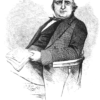
Janice Schroeder, “The Publishing History of Henry Mayhew’s London Labour and the London Poor”
Versions of Henry Mayhew’s massive social survey London Labour and the London Poor appeared in several publishing formats, including newspaper column, weekly serial, live stage show, and bound volume. This article traces the republication and remediation of London Labour alongside Mayhew’s repackaging of his interviews with London “street-folk” from 1849 onwards. I offer a succinct, accessible account of the complex publishing history of the text, from print newspaper column to digital edition.
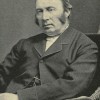
Kimberly J. Stern, “The Publication of John Pentland Mahaffy’s The Decay of Modern Preaching (1882)”
This contribution to BRANCH documents the historical and biographical conditions surrounding the publication of John Pentland Mahaffy’s controversial volume The Decay of Modern Preaching (1882). Although often deemed to be a secular or even heretical thinker, Mahaffy emerges here as a thoughtful scholar of religion standing at the crossroads of faith and reason. In the years preceding the publication of The Decay of Modern Preaching, Mahaffy witnessed a number of changes at Trinity College Dublin that threatened the principles he deemed essential both to good preaching and to intellectual culture more broadly. Mahaffy’s views on intellectual work and religion were mutually sustaining, a fact that helps to enrich our understanding of this important text, its troubled reception in the nineteenth century, and the evolving narrative of nineteenth-century faith.
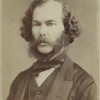
Scott C. Thompson, “On G. H. Lewes’s Problems of Life and Mind, 1874—79″
In Problems of Life and Mind (1874—79), George Henry Lewes posits his theory of “Scientific psychology,” which is founded on a synthesis between the objective study of the mind practiced in physiology and the subjective study of consciousness practiced in philosophy. Problems is an important text because it is one of the last quintessentially “Victorian” studies, a wide-ranging work produced before the full establishment of disciplinary boundaries. It combines a variety of discourses—including philosophy, physiology, psychology, evolutionary biology, and sociology—in order to establish a comprehensive methodology for the scientific study of consciousness. This entry positions Problems into its nineteenth-century psychological and philosophical tradition, as understood by Lewes; provides a summary of the overarching argument of Problems; and outlines the contributing sub-claims made in each of its discrete series.

Nathan K. Hensley and John Patrick James, “Soot Moth: Biston Betularia and the Victorian End of Nature”
The darkened form of the common peppered moth, biston betularia f. carbonaria, known colloquially as the “soot moth,” was virtually unknown in England prior to 1800. The first reliable field specimen was collected outside of Manchester in 1848, plucked from the heart of Victorian England’s rapidly expanding coal economy. With their black abdomen and wings, these darkened morphs contrasted starkly with what had once been the more frequent form: a white-bodied moth lightly speckled with black and brown. As scientific studies now show, the black morph appeared as a result of industrial manufacture, first around major production centers and later around London. This article traces those studies to argue that the emergence of this particular form of melanistic moth signals a sharp pivot in Britain’s environmental history: its appearance augurs a new fossil modernity, in which coal replaces wood and animal fats as the primary source of English energy, and as stored sunlight, archived as coal, takes center stage as the driver for an endless steam-powered project of worldmaking. Tracing studies of “industrial melanism” to its origins at the beginning of this extractive, fossil-fueled modernity helps us see the soot moth’s emergence as a watershed moment in the history of life and a new chapter in humankind’s relationship to the category of nature.

Jill R. Ehnenn, “On Art Objects and Women’s Words: Ekphrasis in Vernon Lee (1887), Graham R. Tomson (1889), and Michael Field (1892)”
Studies of women’s ekphrasis prior to modernism have, so far, tended to focus on individual women writers rather than attempt to identify trends that female authors from a particular time period might share. This essay intervenes in this gap in the scholarship by analyzing ekphrastic prose and poetry by Vernon Lee, Graham R. Tomson, and the co-authors who wrote as Michael Field. As female Aesthetes well-versed in art history and art criticism, as well as contemporary market practices, these nineteenth-century women writers anticipate today’s feminist theorists in the ways in which they were quite conscious of woman’s role as art object and the various functions of that role.
Here I examine Vernon Lee’s somewhat well-known novella Amour Dure (1887) as a foundational case study and then turn to two considerably lesser studied poems: Graham R. Tomson’s “A Silhouette” (1889) and Michael Field’s “Saint Katharine of Alexandria” (1892), for which I also identify the long-lost ekphrastic referent. These three texts all demonstrate how a specific form of aesthetic intertextuality—ekphrastic representational friction—operates as a powerful vehicle for early feminist criticism. In the examples I discuss, gendered critiques drive representational friction between the word, the visual medium, and its original referent—slippages that these art-savvy authors would have easily recognized and had opinions about in the work of others, and intentionally created and/or appropriated in their own work. Importantly, I also argue that a helpful way to think about ekphrastic writing by women writers associated with nineteenth-century British Aestheticism is to consider representational friction with particular regard to how their texts treat objects—seemingly unimportant objects—associated with their subjects.
